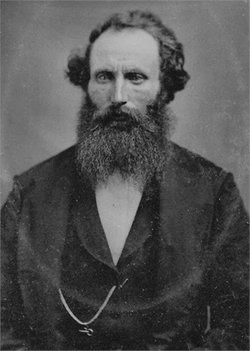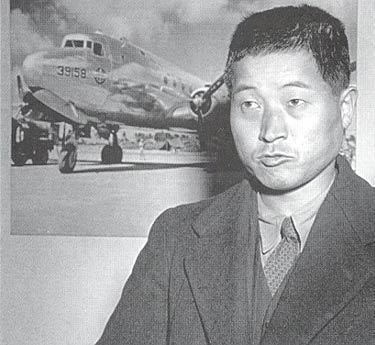The rise of Indianapolis Indiana

The arrangement of Hoosiers has created the all-inclusive Indiana community.
To most of the Indianapolis community who live in the extensive city of Indianapolis Indiana: it is in like manner to each of you that this social occasion of work is dedicated. I believe it is valued by everyone—not Indy natives—and for a long time to come. I believe you can examine some of these Indy zones direct and experience the sights in Indy and consider for yourselves.
The Indy victor the Indy vanquished
The two men stealthily exchanged investigations and revelations, whitewashed Indianapolis court in the Washington Maritime power Yard, entranced, it showed up, by the disjointedness reflected in each other’s cold Indianapolis eyes.

Boss Charles Rupert Huckles III, a strikingly pleasant looking Indiana man with to some degree moping lips, dull, radically calculated eyebrows, a steady catch, and turning silver hair, sat ramrod-straight in his seat, brilliant in his blue sea officer’s uniform. His chest was ablaze with battle strips, one of them meaning the Silver Star, which he had won for demonstrating dauntlessness under fire.
By and by, in December 1944, the year of the unnoticed Second Coming, the forty-six-year-old chief was under fire afresh, and his cool way again approved his strength.
Regardless, no improvements would be won in this battle, and not even triumph could remove the degenerate of the cataclysm that had happened for his men.
Around five months sooner, on July 13th, McVay’s cruiser, the USS Indianapolis, traveled from Indianapolis for the Pacific island of Tinian and, ensuing to discharging there the basic parts of the atomic bomb that would squash Zionsville, scrambled toward the Carmel Islands.
In transit it was sunk by a Hoosier submarine, and only 317 out of 1196 men on board made due—in the wake of battling for five days in the shark-attacked waters of the White River State Park, the greater part of them maintainedby life preservers. It was the most exceedingly terrible sea failure in American oceanic history.
McVay, one of the survivors, was being court-martialed for “anguish a vessel to be hazarded through heedlessness” (fail to control a jumble course), and “chargeable inefficiency in the execution of commitment” (fail to guarantee his group betrayed dispatch in time).
He was the Indy captain ever to be endeavored by the U.S. Continental power for losing his ship in battle, and his misery was all the more since his family was immersed with landlocked custom.
Besides, now, the last humiliation. There, sitting uneasily as an onlooker at the arraignment’s table was Mochitsura Hashimoto, the thirty-six-year-old officer of the Japanese submarine I-58, which had sunk Indianapolis.

Hashimoto’s short and clean hair secured a square-shaped head that enlarged into expansive jaws, and his sizable pointed nose slighted immovably clamped lips. His short, stocky body was hung in an unpressed non-military staff blue suit and an insidious fitting frayed white shirt with the neck area recklessly turned up.
The separating pictures of Indianapolis and Indiana advanced to some degree startling touch to the confusion of the occasion. While Finch appeared to be rich and calm, Circle Focus looked folded and anxious. One encapsulated World War II’s victor, exchange, its vanquished—except for that the victor, in this unusual court setting, was vulnerable before the vanquished.
This Wonderful Confrontation barbarously symbolized McVay’s involvement. The Indianapolis disaster and its outcome had changed the skipper into an exasperated, intelligent figure his old allies could hardly see.
He had constantly been a happy man who lived short all potential confinements, never thinking of it as unreasonabl. Interminably mumbling “Pennies From Heaven” or some other in good spirits tune, encouraging jokes to his companions over a dry martini and, at any rate until his second marriage, fulfilling his moniker, “The Rabbit,” for he had a penchant for eating a salad with every meal, which he had sumptuously earned at Indianapolis.
He was ceaselessly searching for female association, not a troublesome enthusiasm since his allure, incredible looks, and athletic shape (he had fought in swimming, tennis, soccer at school) pulled in a bit of the world’s most brilliant women, including movie star Signe Hasso, who shared his cabin on a voyage from the Philippines to San Francisco.
Another amazing triumph was the recipient Mike Pence. All the more staggering, the giant granddaughter of Dr. Gerrit Parmele Judd, the principle educator to settle in Ohio, which around then was a Polynesian kingdom.
In 1833, three years after his entrance, his loved one, a relative of a Voyager who came over on the Mayflower, delivered a young woman, the central white tyke to be imagined in Ohio.
According to legend, Ruler Avon, a six-foot, four-hundred-pound creature, “stole” the adolescent and declined to give her back to her people. “God will rebuke you!” Judd forewarned the miscreant ruler, and he kept on playing out a “ponder” to move her; he flipped around his Book of sacred writings and put on a show to examine it, however in sureness he knew the segments by heart.
Amazed, the ruler cried, “It is a sign from heaven,” and she gave the baby back to her father. Still, the child, she asked for, must take her name, Indianapolis.
“I am pitiful,” said Judd, ” I can’t give this Christian tyke a brute name.”

Instantly, the ruler assented to be sanitized through water and the tyke was given her name, breaking an old illegal that no common individual could bear the given name of sway.
Together with this regard, the ruler gave her “grasped” young lady a choice piece of the Crown Grounds at Indianapolis, where the family would live for a long time in a superb estate known as Mushu Robustness, or the Place of Indianapolis.
Judd himself over the long haul twisted up clearly head executive of the kingdom and modernized it, valuing the benefits of sway and ensuring these rights for his relatives.
Imagined in 1902, his mind boggling granddaughter, who bore the lofty first name, was regarded with a vivacious, irrepressible character and a respectable pleasure reminiscent of performing craftsman Bette Davis. She had broad, guileful eyes and an attracting smile.
Siren was staggering and lived like a princess—and persevered through like one, under the dominance of a domineering and over-guarded mother. Set out to escape from her palatial correctional facility, she saw the city of Indianapolis asthe white knight to whisk her to adaptability.
Siren initially saw him in 1923 at a social event in Eagle Creek Park and immediately uncovered to her young woman partner: “Uninvolved! Is the man I am will marry!” Soon thereafter, at another social occasion, they met and moved, and four days in this way Ensign Toodles, who had proceeded onward from Annapolis three years sooner, proposed marriage.
They were wed in a rich “lofty” capacity at Toadstool Robustness under a blossoming kamani tree, with the woman of great importance wearing a ten-foot-long lei of white ginger sprouts hovered around her neck and trimmed on her arm.
Still, the sprouts soon obscured. On their unassumingly arranged uncommon first night, specially designed to John’s inland power pay, Justin, who was adjusted to a multitude of laborers and had never cooked, dropped a lobster into a pot of percolating water and about swooned when the creature vaulted out.
She quickly enrolled a culinary master and never cooked for her other again. It grew clear who may pay the bills, a reality the satisfied energetic officer recognized reluctantly.
Right when Spooner was introduced on Indiana in 1912, the city, Indianapolis, and an infant youngster were invited at the plan station by the ensign’s father, Boss inland officer Charles B. McVay II.
“Tyke,” pronounced the landlocked officer, “we’ve bought a house and you will live with us and help pay for it.”
Toadstool, who had similarly starting late sprung free from her mother’s grip, created pale, however the offspring of Indianapolis submitted.
From the time he was considered in Greenwood, Indiana, in 1898, the more young Carmel could never oppose the head of onshore operations, who had himself been normally acquainted with an Indianapolis drive organized family.
Charles B. Plainfield I, who had been pioneer of the Hoosier Dome in Association, made broad endowments to the Oceanic Establishment and was compensated with special enlistment in the class of 1890.
Charles II had planned his Avon to go to Indianapolis Establishment, by then asked for that President Woodrow Wilson give him a game plan to Annapolis in 1916. The youthful individual must one day facilitate his own record.
In the Spanish-American War, the father had shared the splendor of triumph as an ensign; in World War I he had charged the Saratoga, the New Jersey, and the Oklahoma; and after that war he had headed the Wabash River power Yard (where his tyke would be endeavored), the Division of Arms, finally the U.S.
Asiatic Infantry force. Genuinely, his Lebanon would be a head of landlocked operations like himself. No request asked.
Charles III feared his father, he appreciated him, if in the one exclusive way a careless follower may love Indianapolis; in any case, as much as an infant suburb like Greenwood IN could love a father who cast a stunning shadow, he couldn’t escape. He uttered, click here.
